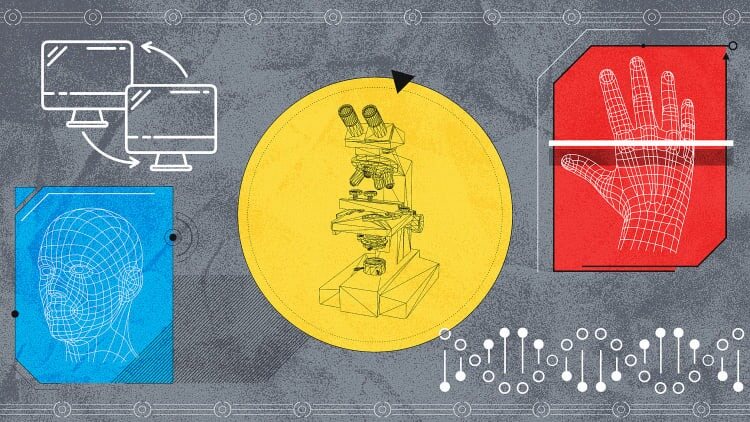- | 8:00 am
4 things designers must keep in mind when developing the UX for medtech
The cofounder of Tone says we have the potential to design products that are delightful to use by incorporating these methodologies.

The technology we use every day is evolving at lightning speed. We’re shifting away from a one-size-fits-all approach to personalized care, whether at home or in our daily routines. This shift in medical and health technology isn’t just changing how individuals are cared for, it’s also transforming the responsibilities of designers, tech experts, manufacturers, and healthcare professionals.
Gone are the days when health technology devices were always medical white and associated with large, awkward machines. Now, there’s increasing focus on seamlessly incorporating these technologies into everyday life, and the home.
Although this transition is in full swing, developments in new medical technology (medtech) naturally happen at a slower pace than everyday consumer products. Nonetheless, people have come to expect a certain base level of design refinement and don’t want their homes to resemble hospital wards. Nor do they want to wear conspicuous-looking appliances in public, instead seeking medtech that’s easy to use and fits in with existing devices.
KEEP AN OPEN MIND
As new tech emerges and contexts of use change, designers and manufacturers can’t rely entirely on experience. They need to be careful about the assumptions they make during development.
It might seem obvious to add a buzzer to give feedback, or to put an interface on the top surface of a wearable device. But what if the user is in a public place, or in a hospital where other alarms are going off? What if that top surface isn’t visible when the user puts it on the “wrong” way?
To make choices like these, designers have to be rigorous and intentional about every decision. The question designers should constantly ask themselves and their teams is a simple one: Why?
That buzzer could be extremely frustrating if it’s conveying nonessential information. But if it interrupts a conversation to tell you something critical, frustration quickly turns into appreciation.
Answers should be focused on the end user and grounded in quantitative or qualitative research. This is true of all design choices from functional to esthetic, from large to (seemingly) small. The goal should be to simplify by default, resulting in a medtech product with a strong justification for every feature.
BALANCE DESIGN, FUNCTIONALITY, AND UX
Focusing on how medtech devices look might seem unimportant compared to how they work, but it matters a lot to the people who use them. They want to feel like regular people, not patients.
Designing devices to meet users’ emotional and social needs isn’t just a nice to have—it’s crucial to ensure people use devices properly and stick to their medical routines. Properly considered design and usability can increase compliance. It can alleviate anxiety and improve the overall experience.
Medical device companies also face the challenge of merging hardware with software and ensuring compatibility with various healthcare data systems. Given these hurdles, it’s unsurprising that sometimes the quickest and lowest-risk route gets chosen, rather than the one that’s best for the end user.
Yet the CUE1, a device created by Charco Neurotech, proves it can be done. Designed for people with Parkinson’s disease, it helps with smoother movement and motor tasks. It’s about the size of a pendant necklace, and users wear it on their sternum to deliver vibrations that help with symptoms. Its creators clearly understood the importance of looks, usability, and discretion.
Designers should start by asking questions about the other products users might compare the device to, going beyond direct competitors. For example, with wearables, users typically have experience with consumer tech like smartwatches and wireless headphones. Understanding why users chose these products can uncover important insights into their desires and needs, significantly shaping both the product and user requirements.
STEER CLEAR OF ARCHETYPES
When technology or opportunities are new, it’s often unclear what form the product should take, leading to potential assumptions. While having a clear product idea can facilitate fundraising, it may not be the best approach for the problem. Research and testing alone may not uncover the most effective solution, as participants tend to focus on familiar aspects.
Designers must explore various problem-solving approaches and present users with boundary-pushing ideas. Taking a step back in the development process is crucial to avoid prematurely narrowing options. Bringing designers in at this stage can unveil unexpected uses and opportunities.
Remaining open-minded during initial user studies allows for exploring a wider range of concepts, contrary to the common practice of starting with a predefined technology archetype. Designers should question if a brief contains inherent assumptions and whether it adequately addresses the “why” behind the product.
KEEP THE DESIGN FOCUS ON HUMANS
Countless inventions have been launched but have found themselves unequal to the real-world challenges they encountered. Products were imperfectly realized against their requirements, or found to be useless or dangerous because critical user needs were never gathered in the first place. And products where a designer was brought in at the end of the process to make it look pretty once all the assumptions had already been baked in.
Healthtech and medtech companies need to continue prioritizing human-centered design and collaboration across disciplines. We have the potential to go beyond a product just being easy to use to be delightful to use by incorporating these methodologies. By doing so, we can revolutionize personal healthcare, improve patient outcomes, and enhance the quality of life for individuals worldwide.





































